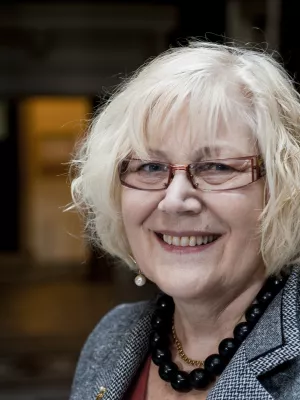
Ingalill Rahm Hallberg
Professor emerita

Quality of life of elderly persons with cancer: a 6-month follow-up
Author
Summary, in English
The aim of this study was to investigate possible changes in quality of life (QoL) in elderly persons diagnosed with cancer (65 years and above), in relation to age, contact with the health-care system, activities of daily living, hope, social network and support. The investigation points were at time of diagnosis (baseline), and again 3 and 6 months after the diagnosis. The study also aimed to investigate which of the aforementioned factors predicted deteriorated QoL in elderly persons with cancer from baseline to the 6-month investigation. At baseline, the sample consisted of 101 individuals aged (age 65+) recently diagnosed with cancer (74 women, 27 men), but was reduced to 75 (57 women, 18 men) by the 6-month investigation point. EORTC QLQ C30, Katz ADL, Nowotny's Hope Scale and Interview Schedule for Social Interaction were used in structured personal interviews and questionnaires. Emotional function improved significantly over time, and complaints of nausea and vomiting decreased. Contact with a district nurse at baseline predicted deteriorated QoL from baseline to 6 months later. Support from grandchildren increased significantly. About 30% of the total sample deteriorated in QoL, by the significant >= 10 units, from baseline to 6-month follow-up, while about 70% remained stable in QoL from baseline. The majority of the elderly persons with cancer showed an ability to adjust to the new condition. However, in clinical practice, specific attention should be paid to the most vulnerable groups of elderly persons with cancer: those with advanced disease and decreased hope, and those with increased need of both informal and formal assistance.
Department/s
- Department of Health Sciences
Publishing year
2007
Language
English
Pages
178-190
Publication/Series
Scandinavian Journal of Caring Sciences
Volume
21
Issue
2
Links
Document type
Journal article
Publisher
Wiley-Blackwell
Topic
- Nursing
Keywords
- trajectory
- social network and support
- hope
- aged 65+
- activities of daily living
- district nurse
- grandchildren
Status
Published
ISBN/ISSN/Other
- ISSN: 1471-6712

